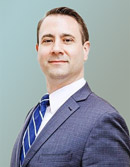Below you will find a real life case study of a couple who is looking for financial advice on how best to arrange their financial affairs. Their names and details have been changed to protect their identity. The Globe and Mail often seeks the advice of our Portfolio Manager & Senior Financial Planner, Matthew Ardrey, to review and analyze the situation and then provide his solutions to the participants.
![]()
Written by:
Special to The Globe and Mail
Published September 20, 2024

Mark and Lois have a retirement spending target of $100,000 a year after tax.
Mark is 55 years old and earns a base salary and bonus of $370,000 a year. Lois is 51 and earns $30,000 as a self-employed health care practitioner. The big disparity in their salaries presents Mark and Lois with some excellent opportunities to save on the family tax bill.
They have one child, 16, a mortgage-free house in Toronto and substantial savings. Mark has a defined-contribution (DC) pension plan at work to which both he and his employer contribute. He also has a locked-in retirement account (LIRA) from a previous employer.
Medium term, they plan to buy a car and upgrade their kitchen and bathroom. Their monthly budget will fall by $2,200 a month in three years when their son finishes his equestrian activities.
“Is our savings plan on track to retire when Mark is 62?” they ask in an e-mail. Their investments are mainly in stock exchange-traded funds. “What is the optimal asset mix for growth and capital preservation?” they ask. “What is the most tax-efficient process for after-tax decumulation?”
Their retirement spending target is $100,000 a year after tax.
We asked Matthew Ardrey, a portfolio manager and senior financial planner at TriDelta Private Wealth in Toronto, to look at Mark and Lois’s situation. Mr. Ardrey holds the certified financial planner (CFP) designation as well as the advanced registered financial planner (RFP) designation.
What the expert says
Mark and Lois are preparing for retirement and want to ensure that they have all of their bases covered before making the transition, Mr. Ardrey says.
Mark is saving $5,000 a year to a DC pension plan, which his employer matches. Mark then contributes the remainder of his registered retirement savings plan (RRSP) room to a spousal RRSP for Lois. Both maximize their tax-free savings account (TFSA) contributions each year.
In about three years, horseback-riding expenses and associated fuel costs will be eliminated when lessons stop for their son, Mr. Ardrey says. “The funds that were being spent are assumed to be saved.”
In addition to their regular spending, they plan a renovation of $125,000 in a couple of years’ time and a new car for $80,000 about five years from now, the planner says.
Mark plans to retire at the age of 62 and Lois will retire at the same time. Both will have a life expectancy of 95 and inflation during the forecast is assumed to average 3 per cent a year.
“When reviewing the initial budget submitted, there is about $75,000 unaccounted for each year,” Mr. Ardrey says. This is income after taxes, savings and spending are accounted for. “This is a material amount.” When RRSP refunds and other tax items are accounted for, this quickly grows to more than $100,000 a year, he says.
Mark said this surplus goes to non-registered savings. “I would strongly suggest that they review their budget to ensure that this is the case,” Mr. Ardrey says. “Unless this is a recent phenomenon, the fact they have only $100,000 in non-registered investments does not support the idea of multiple years of $75,000-plus in surpluses.”
When they retire it is assumed that Mark will get 100 per cent of the maximum Canada Pension Plan (CPP) benefit and Lois 25 per cent.
Mark and Lois’s portfolio is largely invested in a Standard & Poor’s 500 exchange-traded fund and a global equity fund from Mark’s DC pension at work. The fees on these investments are zero or next to zero. “Despite recent success in the U.S. markets, this does lead to some concentration risk with the portfolio being 96 per cent in stocks and 76 per cent in the U.S. market,” the planner says.
Once they are no longer working, the planner assumes that Mark and Lois will shift the portfolio to a more balanced asset mix to reduce volatility risk.
“Based on the above assumptions, they can meet their retirement goal with ease under the straight-line projection model,” Mr. Ardrey says. That assumes returns are consistent over time.
“To truly understand the risk in this plan, we need to move beyond the straight-line projection, because we know that life and investments rarely ever move in a straight line,” the planner says. To ensure the viability of this plan, he stress-tested it by using a Monte Carlo simulation, which introduces randomness to a number of factors including returns.
He ran 1,000 iterations with the financial planning software to get the results. For a plan to be considered “likely to succeed” by the program, it must have at least a 90-per-cent success rate. If it is below 60 per cent, then it is considered “unlikely to succeed.” Between there is “somewhat likely.”
Based on the assumptions above, Mark and Lois have an 80-per-cent chance of success under the Monte Carlo simulation, the planner says.
If they were spending all of the surplus savings preretirement (the unaccounted-for $75,000 a year) instead of saving it, the chance of success would dwindle to 59 per cent. “This is again why it is paramount that they review their budget to ensure that they are actually saving these amounts.”
Aside from the budgeting, there are a few things that Mark and Lois can do to improve their odds of meeting their goals. First, they can save more in Lois’s name. She earns $30,000 a year and she should save every penny of it in her name, the planner says. “This is one way that they can amass assets in Lois’s name without incurring attribution back to Mark.” Mark can pay all of the expenses, including her taxes, without attribution. “The equalization of income is one of the best ways to minimize taxes in retirement,” Mr. Ardrey says.
Should you start collecting CPP at age 65 or earlier? Our CPP calculator compares the benefits.
Next, they should both defer their CPP and Old Age Security benefits until the age of 70. They should use the time when their income is lower to withdraw from their RRSPs, especially Mark. Mark can start by electing maximum withdrawals from his life income funds (resulting from his LIRA and DC pension plan). He would supplement this with further withdrawals from his RRSP. Once he is 65, he should transfer the amount of the annual withdrawal from the RRSP to a registered retirement income fund (RRIF) so it is eligible for income-splitting with Lois.
In addition to splitting RRIF income, they should share their CPP benefits. Lois should also apply for the child-rearing dropout provision to increase her overall CPP benefit.
“Sharing CPP between spouses is based on the number of years co-habitating during the contribution period,” the planner says. They need to fill out a form to apply.
Finally, they can improve their investment strategy and lower their costs by engaging the services of a portfolio manager with a focus on income generation, Mr. Ardrey says. “There are many solid investment options with strong yields and moderate overall growth that can lower volatility risk while still maintaining a solid rate of return.”
With some tax planning and improvement in volatility risk, the Monte Carlo simulation moves to 100-per-cent success, the planner says.
Client situation
The people: Mark, 55, Lois, 51, and their son, 16.
The problem: Are they well prepared to retire at Mark’s age of 62 with a $100,000-a-year spending target? How can they draw down their savings in the most tax-efficient way?
The plan: Track spending to make sure money isn’t slipping through their fingers. Take full advantage of all the income-splitting opportunities available.
The payoff: All financial goals achieved.
Monthly net income: $19,910.
Assets: Cash $25,000; non-registered savings $100,000; his TFSA $126,000; her TFSA $148,000; his RRSP $1,115,000 (including LIRAs); her RRSP $327,000; market value of his DC pension $275,000; registered education savings plan $92,000; residence $1,400,000. Total: $3.6-million.
Monthly outlays: Property tax $500; water, sewer, garbage $60; home insurance $100; electricity $100; heating $130; security $10; maintenance, garden $60; car insurance $170; fuel $400; other transportation $285; groceries $700; clothing $100; charity $50; vacation, travel $1,300; dining, drinks, entertainment $425; personal care $80; golf $250; riding lessons $2,500; sports, hobbies $85; subscriptions $60; drugstore $50; health, dental insurance $50; life insurance $200; disability insurance $200; phones, TV, internet $195; RRSPs $2,150; TFSAs $1,100; pension plan contribution $800. Total: $12,110.
Liabilities: None.
Want a free financial facelift? E-mail finfacelift@gmail.com.
Some details may be changed to protect the privacy of the persons profiled.

Matthew Ardrey
Portfolio Manager & Senior Financial Planner
matt@tridelta.ca
(416) 733-3292 x230
